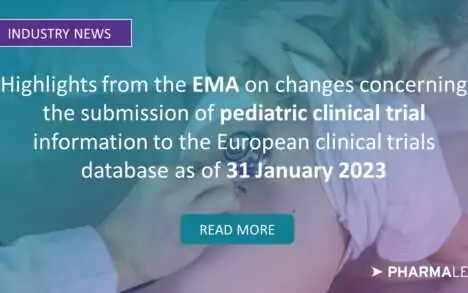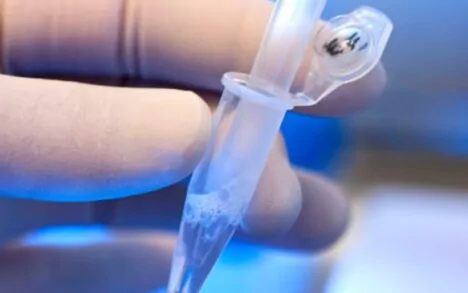Real-world evidence has gained recognition as a complement to randomized controlled clinical trials in cases when these are challenging to perform and to fulfill post-marketing authorization surveillance obligations. Its growing importance is reflected in several important initiatives, papers and data-driven programs that have emerged across Europe.
In June, the European Medicines Agency (EMA) held a workshop entitled “Joint HMA/EMA Big Data Steering Group Workshop on RWE methods: Harnessing Real-World Data for Regulatory Use”[1]. The workshop provided a forum to exchange opinions and address questions on the EMA reflection paper concerning the use of RWD in non-interventional studies (NIS)[2].
The reflection paper, which is now closed for public consultation, focuses on “methodological principles that are considered critical for the conduct and assessment of NIS using RWD and used for regulatory decision-making throughout a medicine’s lifecycle.”
While highlighting its potential limitations, EMA has shown continued support for the use of RWD and RWE to inform regulatory assessment. The purpose of the reflection paper is to both understand the limitations and assess ways to mitigate these to increase reliability of RWE. Integral to assessing suitability of RWD for regulatory purposes is the quality of the data, including its reliability and relevance.
The agency’s reflection paper follows ISPOR’s 2024-2025 trends report, which names RWE as the top trend affecting healthcare decision-making around the globe[3]. Indeed, regulatory authorities are increasingly providing guidance on the use of RWE, and have initiated projects that advanced its use throughout the product lifecycle.
RWE in practice in Europe
Perhaps most notable is the initiative between EMA and the European Medicines Regulatory Network to set up a coordination center for use of real-world healthcare databases. Known as DARWIN EU (Data Analysis and Real World Interrogation Network). The DARWIN project was initiated in 2021 and is expected to be in full operational mode this year, with plans to increase the geographical coverage, scope and regulatory uses of data from DARWIN in 2025.
By way of example, one DARWIN project studied the incidence and prevalence of antibiotic use by calendar year, age, sex and country/database during the study period 2012-2021. The goal of the study is to monitor the use of antibiotics as part of the global fight against antimicrobial resistance[4].
Another important initiative that has RWE and RWD at the center is Finland-based Fingenious initiative, which serves to advance biomedical research through access to public biobanks in Finland. This approach has, for example, been applied in a study exploring potential genetic modifiers on the effectiveness of dietary/lifestyle interventions to address obesity[5]. Importantly, the Fingenious project is first and foremost an ecosystem to enable easier RWE research by bringing together service providers involved in biomedical research, including in technology, administration, sourcing data and samples, analytics and consultation[6].
The potential to generate RWE from the comprehensive Nordic registers is widely acknowledged, where the use of personal identification numbers makes it possible to link to different sources of data.
Nordic countries have a long tradition of retaining comprehensive health records and data is widely used for research[7]. Having coverage of the entire national population combined with the possibility for linking to multiple data sources (including disease-specific quality registers such as the Swedish cancer registry initiated already in 1958[8]) makes it possible to conduct detailed and extensive three-dimensional studies. The research question or questions ultimately determine if an application limited to aggregated statistics will fit the purpose, or if an extensive patient-level data extraction is relevant. The Swedish registry has recently introduced a standard report, where high-level descriptive statistics can be delivered within a week[9].
Legislation regarding health data in the Nordics permits its use for secondary purposes as research. Finland was on the forefront of implementing legislation on the secondary use of data in 2019. Recently, Danish authorities proposed a set of amendments to the current law aiming to further facilitate scientific research[10].
Putting RWE at the center
There is growing consensus that RWE has the potential to improve understanding of a medicinal product’s efficacy and safety, complementing clinical trial data. It can even enable faster patient access to potentially transformative therapies if leveraged appropriately during health technology assessment (HTA) discussions, another potential use of the DARWIN EU initiative[11].
EMA’s reflection paper together with the various initiatives across the EU and the Nordics will play an increasingly important role in establishing the use of RWE and addressing barriers to its use.
Do you have experience with RWE? Have you considered how to apply RWD and RWE during study feasibility, study design, protocol, ethical application, data application and analysis? What challenges have you encountered and what approaches have you adopted to advance the use of RWE? We would be interested in hearing about your experience.
About the author:
Annabelle Forsmark is Senior Manager, Health Economics & Outcomes Research at PharmaLex where she draws on her vast experience in managing projects concerning all the Nordic markets, including reimbursement dossiers, supporting payer negotiation processes, health economic modelling, evaluation of clinical and health economic data, and strategic advice on market access.
[1] Joint HMA/EMA Big Data Steering Group workshop on RWE methods, enepp. https://encepp.europa.eu/newsroom/events/joint-hmaema-big-data-steering-group-workshop-rwe-methods-2024-06-14_en
[2] Reflection paper on use of real-world data in non-interventional studies to generate real-world evidence, EMA, April 2024. chrome-extension://efaidnbmnnnibpcajpcglclefindmkaj/https://www.ema.europa.eu/en/documents/scientific-guideline/reflection-paper-use-real-world-data-non-interventional-studies-generate-real-world-evidence_en.pdf
[3] 2024-2025 Top 10 HEOR Trends, ISPOR. https://www.ispor.org/heor-resources/about-heor/top-10-heor-trends.
[4] DARWIN EU® DUS of Antibiotics in the ‘Watch’ category of the WHO AWaRe classification of antibiotics for evaluation and monitoring of use, EMA. https://catalogues.ema.europa.eu/node/3659/administrative-details
[5] GENEROOS: The role of genetics in weight loss research – contacting study participants via MyBiobank service, Fingenious. https://site.fingenious.fi/en/articles/generoos-the-role-of-genetics-in-weight-loss-research
[6] Fingenious Ecosystem delivers more together. https://site.fingenious.fi/en/fingenious-ecosystem
[7] National Cancer Register, Socialstyrelsen. https://www.socialstyrelsen.se/en/statistics-and-data/registers/national-cancer-register/
[8] Nordic Health Registry-Based Research: A Review of Health Care Systems and Key Registries, Clin Epidemiol, 2021. https://www.ncbi.nlm.nih.gov/pmc/articles/PMC8302231/
[9] Information on how to order a standardized statistical report, standard report. https://bestalladata.socialstyrelsen.se/standardrapport/
[10] Proposal for an Act amending the Act on scientific ethical treatment of health science research projects and health data science research projects and the Health Act, Ministry of the Interior and Health. https://www.ft.dk/samling/20231/lovforslag/L45/index.htm
[11] Advancing the use of real world evidence in health technology assessment: insights from a multi-stakeholder workshop, Front Pharmacol., 2023. https://www.ncbi.nlm.nih.gov/pmc/articles/PMC10811058/








